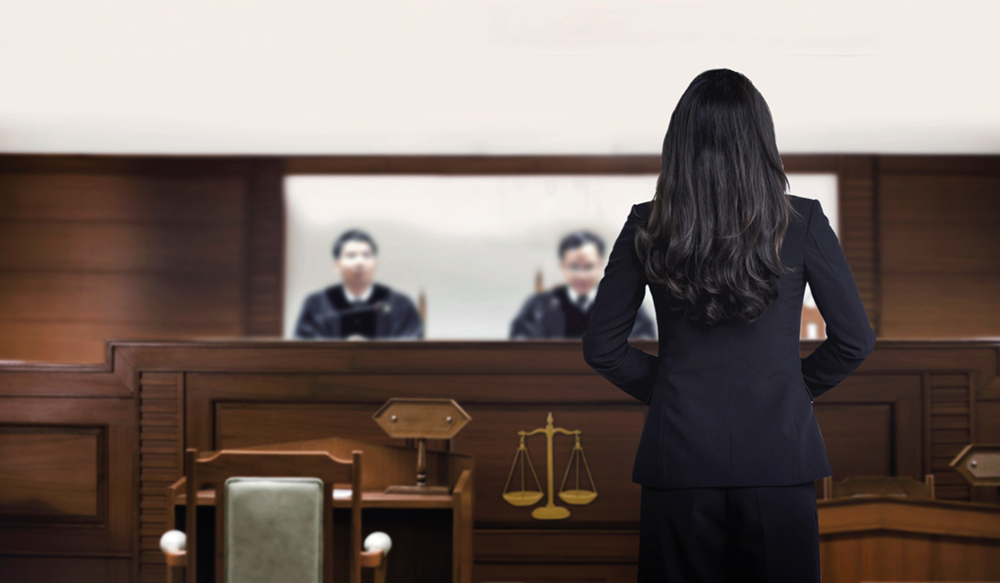Elevate Your Lawful Practice with Innovative Trial Presentations: Ideal Practices and Advice
Elevate Your Lawful Practice with Innovative Trial Presentations: Ideal Practices and Advice
Blog Article
Navigating the Intricacies of Trial Presentations: Tips for Seamless Delivery and Compelling Disagreements
In the realm of lawful process, the art of test discussion stands as a critical factor of success. As lawyers browse the complex web of court dynamics, the capacity to effortlessly deliver debates and proof while captivating the court's focus ends up being extremely important. The complexities intrinsic in test discussions require a delicate equilibrium of skill, approach, and skill. By refining techniques that guarantee a polished delivery and crafting engaging disagreements that reverberate with the audience, attorneys can substantially boost their campaigning for. In a globe where persuasion preponderates, mastering the complexities of test discussions is not merely an alternative but a requirement for those seeking to dominate in the court room.

Comprehending Test Purposes
To properly browse a test, it is critical to have a clear understanding of the goals that need to be achieved. Before entering the court, legal groups need to specify their goals and wanted outcomes. These objectives work as directing concepts throughout the test, shaping approaches and affecting decision-making processes.
Comprehending trial purposes involves an extensive evaluation of the situation, legal criteria, and the client's best interests. Trial Presentations. It requires a meticulous examination of the facts, determining essential problems, and preparing for potential difficulties. By establishing certain and measurable goals, attorneys can tailor their debates and presentations to straighten with the wanted results
Moreover, a clear understanding of trial purposes enables legal teams to prioritize proof, witnesses, and lawful debates effectively. It enables the development of a systematic narrative that reverberates with the discretionary, reinforcing the total case discussion.

Organizing Evidence Effectively
Having a clear understanding of test goals lays the structure for arranging evidence effectively in legal procedures - Trial Presentations. By aligning the presentation of proof with the desired outcomes of the trial, lawful groups can enhance their debates and enhance their persuasiveness. One important facet of organizing evidence is categorization. Organizing proof based upon styles or relevance to details lawful elements can aid improve the discussion and make complicated info a lot more absorbable for the judge or jury.
One more crucial element in organizing proof efficiently is developing a sensible flow. Offering evidence in a consecutive and systematic manner can help develop a compelling narrative that sustains the legal disagreements being made. In addition, making use of aesthetic aids such as graphs, graphes, or timelines can even more enhance the organization of evidence and aid in clarifying complex connections or sequences of events.
In addition, guaranteeing that all evidence provided is pertinent and permissible to the case is important. Inadmissible or unimportant proof can interfere with the see strength of the argument and potentially hurt the trustworthiness of the offering event. Therefore, a important source thorough testimonial and option process should be carried out to consist of just one of the most legitimately audio and impactful proof in the test presentation.
Crafting Persuasive Stories
Crafting engaging narratives plays an essential duty in offering influential debates throughout legal process. A well-crafted story has the power to captivate the target market, stimulate feelings, and eventually persuade the decision for the here and now celebration. When building a story for a trial presentation, it is important to establish a clear story that highlights bottom lines and connects them in a meaningful manner. Begin by detailing the realities of the situation in an engaging manner, making sure that the sequence of occasions is easy to comply with. Introduce characters properly, providing history info that aids the audience understand their activities and motivations. Furthermore, integrating vivid summaries and appealing language can bring the narrative to life, making it much more remarkable for the judge and court. By weaving together proof, testimony, and legal arguments right into a persuasive and natural narrative, attorneys can successfully support for their clients and increase the probability of a favorable outcome in the court.
Mastering Visual Help
Effective use visual aids is essential to enhancing the impact and clearness of test discussions. Aesthetic help, when used purposefully, have the power to streamline complicated information, strengthen bottom lines, and leave a lasting impression on the discretionary. To master visual aids in trial presentations, it is crucial to make sure that they are clear, concise, and appropriate to the disagreements being made.
When including visual help, such as graphes, timelines, photographs, or graphs, into a test presentation, it is vital to maintain them aesthetically appealing yet expert. The visuals ought to complement the verbal debates, giving an aesthetic depiction of the details being gone over without frustrating the audience with unnecessary information.
In addition, exercising with the aesthetic aids beforehand is crucial to make sure a smooth delivery throughout the test. Acquainting oneself with the material, transitions, and timings of each aesthetic aid can assist preserve the flow of the discussion and protect against technological next problems that might emerge.
Delivering Impactful Closing Disagreements
A compelling closing debate serves as the culmination of a trial discussion, encapsulating the core narrative and convincing the court and court in the direction of a positive choice. Begin by detailing the primary arguments that sustain your customer's placement, stressing why the evidence presented throughout the trial supports your narrative.
Furthermore, including emotional charm can further enhance your closing debate. By humanizing the instance and connecting on a personal degree with the decision-makers, you can stimulate empathy and understanding, affecting their perception of the realities presented. Additionally, repeating the legal criteria that must be fulfilled for a desirable ruling can enhance the validity of your setting. Ultimately, a well-crafted closing debate must leave an enduring perception, engaging the judge and jury to rule in your client's support.
Conclusion
In verdict, mastering test discussions involves comprehending goals, arranging proof, crafting stories, utilizing aesthetic help, and delivering impactful closing disagreements. By implementing these approaches effectively, lawyers can present their case perfectly and make compelling debates in the courtroom. It is crucial to browse the intricacies of trial discussions with accuracy and skill to achieve success in legal process.
By lining up the presentation of evidence with the preferred results of the trial, lawful teams can strengthen their debates and improve their persuasiveness (Trial Presentations). To master visual aids in test discussions, it is crucial to make certain that they are clear, succinct, and pertinent to the disagreements being made
A compelling closing argument offers as the end result of a trial discussion, enveloping the core narrative and encouraging the court and jury in the direction of a favorable choice. Begin by describing the main arguments that support your client's placement, emphasizing why the proof offered throughout the test sustains your narrative.In final thought, understanding trial presentations includes understanding objectives, organizing proof, crafting stories, utilizing visual help, and supplying impactful closing arguments.
Report this page